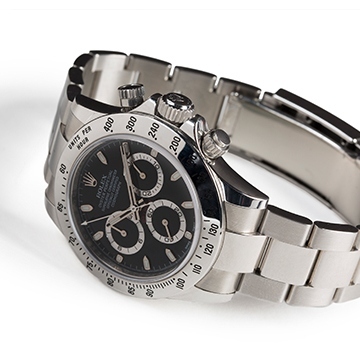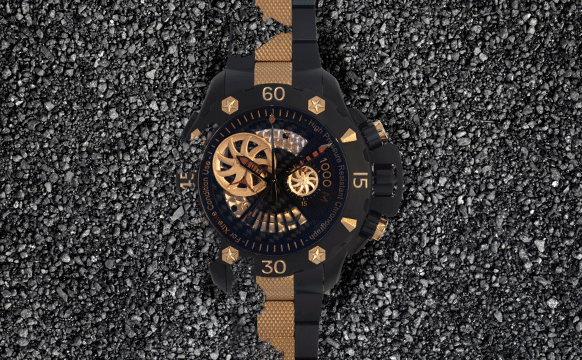
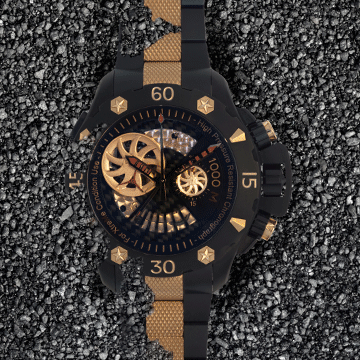
6 Unexpected Ways to Break Your Watch (and How to Avoid Them)
It’s easy to rationalize a luxury watch purchase. Hand-crafted timepieces are incredibly accurate, they retain their resale value and they make for great heirloom pieces — but only if you do your part. Your sleek timekeeper is designed to last a lifetime, but it’s also quite delicate and will only make it to your son’s graduation if you treat it with care. But even the most seasoned watch experts make mistakes from time to time, including our own Senior Fine Jewelry & Watch Director, Michael Groffenberger, who recounted a terror-filled afternoon in which he almost lost his beloved vintage Rolex 1655 Explorer II:
“One day, I was at my in-laws’ house sitting by the pool. Their English springer spaniel loves to swim, so he was diving in and out of the pool and I decided to jump in with him. Without thinking anything of it, I jumped into the pool with my watch still on my wrist (it was designed for cave diving after all). But minutes later, while drying off I looked down at my precious watch to see the kiss of death — a fogged-up crystal. Water had entered the watch.”
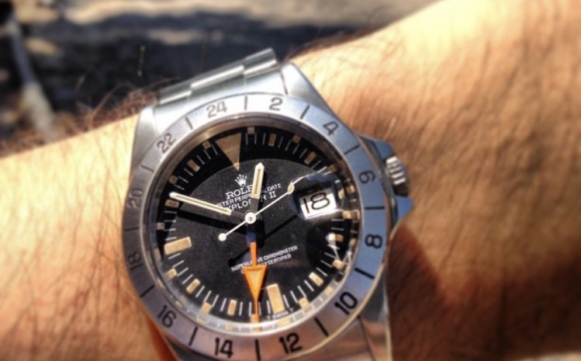
“I knew time was of the essence. I was hours away from the watch requiring new components, which would have damaged its integrity as a wholly original vintage piece. Luckily, I remembered a skilled Rolex watchmaker I’d worked with numerous times and thought maybe he would take the call on a Sunday to help me save my beloved timepiece. In the meantime I threw it in a bag of rice with the crown open.”
“The watchmaker opened his facility for me and immediately opened up the watch, water spilling out all over his bench. He didn’t make any promises. A week later, a box showed up with the watch, looking perfectly vintage, and a note saying ‘Vintage watches don’t like water….but we got to this one in time.’ I learned my lesson: if you have a vintage Rolex, even if it was designed to be water resistant, chances are it’s not, and it never will be. So keep it out of the pool!”
While jumping into a pool may seem like an obvious way to ruin a watch, there are several other things you probably do in your daily life that could be slowly causing serious damage. Read on to learn the six surprising ways you can wreck your timepiece along with tips on how to avoid them from our Fine Jewelry & Watch Manager, Nathan Hall.
1. Letting It Sit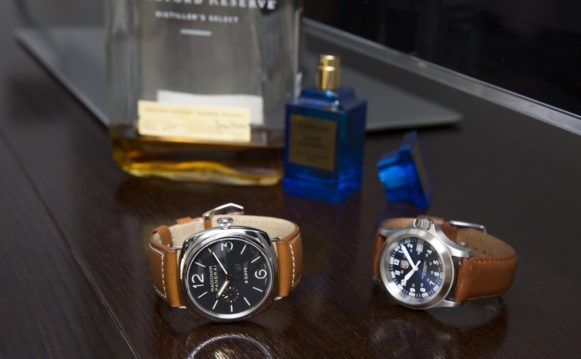
Though Hall admits that it’s not necessary to keep an automatic timepiece in a watch winder, he does recommend changing its position frequently while it’s not in use. “Leaving a self-winding watch in one position for a prolonged period of time is a type of improper storage,” says Hall. “The oils inside it can pool in one spot, causing components to lose their required level of lubrication, producing friction between the moving parts and requiring service.” This is especially true of vintage watches as newer models are lubricated with modern-day synthetic oils that are less likely to coagulate. In any case, get the most use out of your watch and wear it, don’t store it.
2. Winding Up In The Wrong Place
If you have a mechanical watch, you’ll likely have to wind it every one or two days to keep it running. And though it may be tempting to do it while it’s on your wrist, that would be a bad idea. “Attached to the crown is a long winding stem that goes into the center of the watch,” Hall explains. “If you wind the crown while the watch is on your wrist, you’re pulling upwards and putting extra stress on the winding stem, which is connected to several other important mechanisms inside the watch.” Always take off the watch before winding, and keep it flat — parallel to the floor. Observe the tension you feel in the crown and once it feels tight, don’t rotate any further or you risk breaking the mainspring.
3. Pushing Its Buttons (Under Water)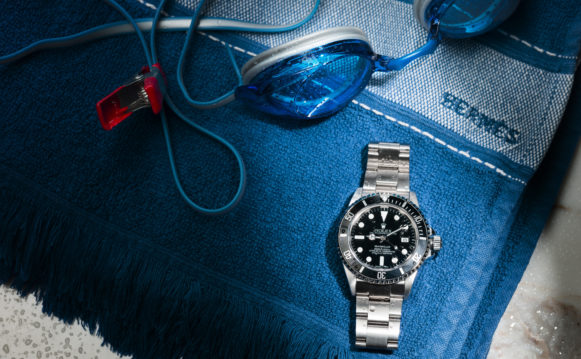
Though some diving watches are equipped with chronographs, many experts would advise against ever using the pushers under water. “In general, you don’t want to manipulate any of the functions while the piece is submerged as this will let water into the case,” Hall warns. Most watches are water resistant, but as our Senior Fine Jewelry & Watch Director knows all too well, this is not the same as waterproof.
In fact, there’s no such thing as a watch that’s truly impervious to H20 — the U.S. Trade Commission banned the use of the word “waterproof” in watch advertising, so before you take a dive, be sure to check your watch’s caseback for the resistance mark. “A common misconception is that water resistance is a measure of depth, but it’s actually a measure of pressure,” Hall explains. “If your watch’s resistance is up to 30 meters, you can be out in the rain with it, wash your hands, even submerge your hands in a pool, but you couldn’t swim with it without causing damage. Even if you’re swimming 3 feet of water, you’d be subjecting the watch to more than 30 meters of pressure.”
4. Bringing It Up-To-Date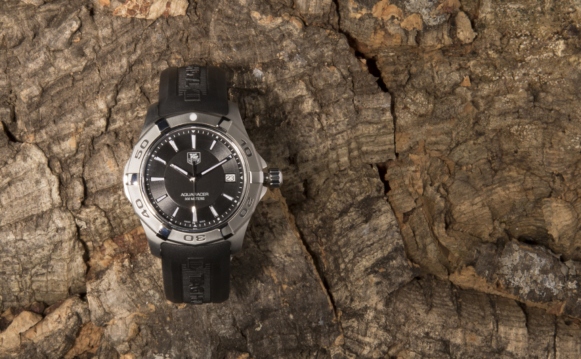
On watches featuring a day or date function, the display is designed to update at or near midnight each night, but the process actually takes hours. The calendar aperture starts engaging with the hour disc usually around 10pm and disengages at about 2am when the date change is complete. “If the wearer changes the date when the wheels are still engaged (at 11pm for instance), the wheel’s teeth may break off, which could cause the date to change at the wrong time, like at 3 o’clock in the afternoon,” says Hall. “To avoid this from happening, whenever you need to change the day or date, always set the hour hands south, around 5 o’clock, so you know that the timing wheel and the calendar aperture will not be engaged and you can adjust the date freely.”
5. Being A Jetsetter
From airplanes to iPhones to stereos, the average person is exposed to magnets every day, and though they often go unnoticed, they can greatly affect your timepiece. “When a watch is exposed to magnetic fields, the thin loops of the hairspring can stick together, so instead of being a concentric circle of spiraling wire, it can get thrown out of shape, causing the watch to run faster,” explains Hall. Depending on the severity, it might not be immediately noticeable that your watch has been magnetized, but over time you’ll notice the watch losing a few minutes per day while a normal watch may lose only one or two seconds daily.
If you discover that your watch has been magnetized, the remedy is simple. Any reputable jewelry store will have a demagnetizer available and the watch can be fixed without even opening the case.
6. Hitting The Links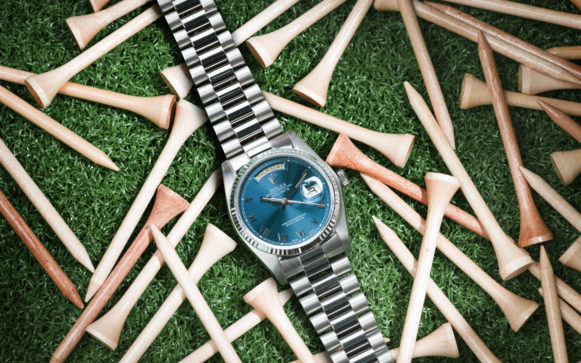
“A golf swing can hugely disrupt an automatic or mechanical watch,” says Hall. “The force of the hand making impact with the ball causes a lot of torque. It doesn’t cause damage, per se, but it can cause a variation in time. Depending on how forceful the swing, the vibration in your arm could cause a deviation in the watch’s accuracy.” So before you don your cleats and argyle socks, make sure the watch you’re wearing has a quartz movement.
Ready to care for a luxury watch? Shop our selection of designer timepieces here.



